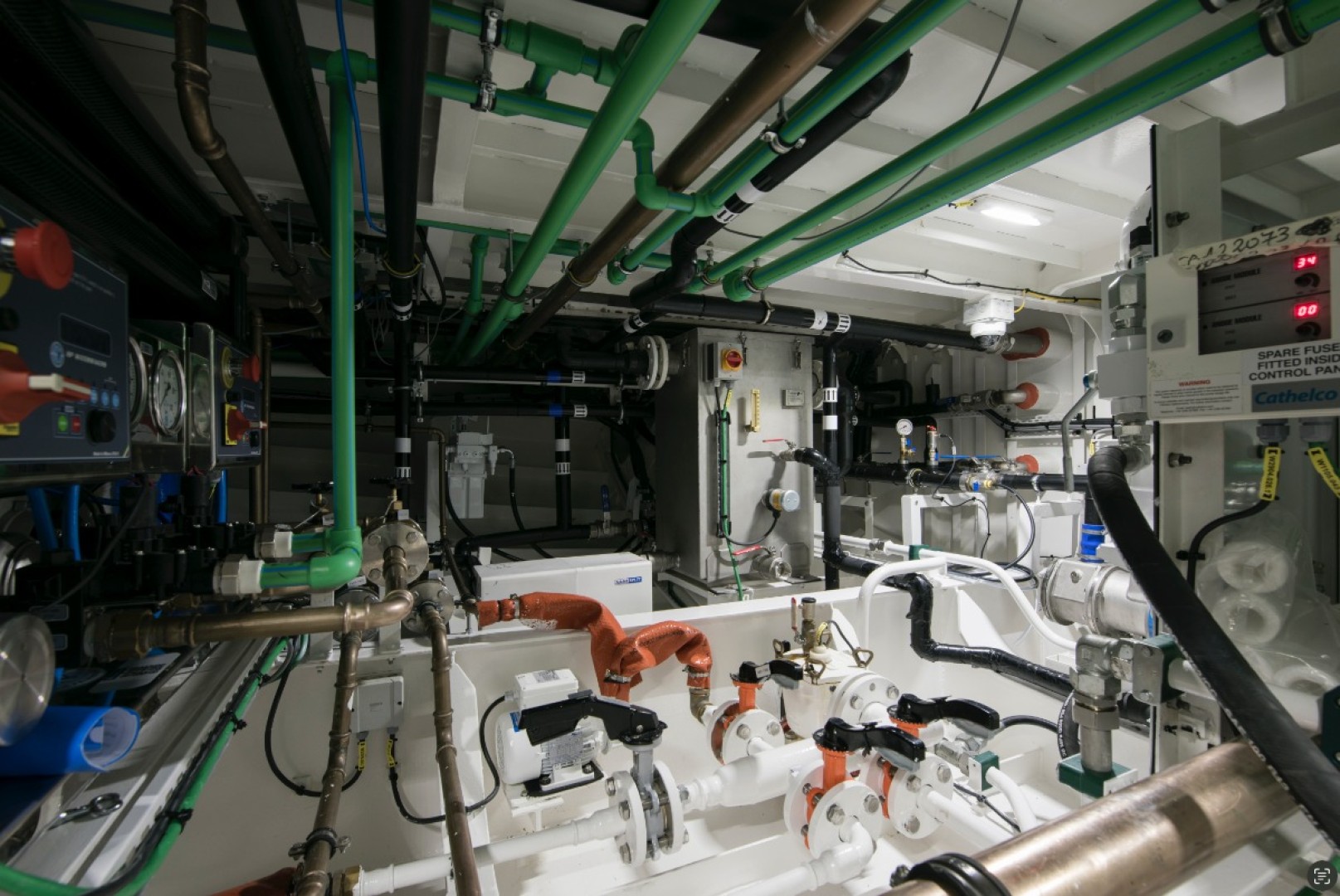


But first it is essential to properly introduce the Al Waab, a 54.85-metre superyacht built in Turkey by the Alia Yachts shipyard and launched in 2021. In this yacht with a modern and powerful design, spaces are ingeniously arranged thanks to the innovative project of the Vripack studio, which dealt with both the naval architecture and the interiors. In 2022, Al Waab won three categories of the “Design and Innovation Awards”, for the best interior and exterior design in its class, as well as the award for the best naval architecture on a displacement yacht.
But Al Waab is exceptional in many other ways, for example for being just below the 500GT threshold despite a length of almost 55 meters. The 9.10 metre beam means it is slim, which gives it excellent fuel efficiency, a maximum speed of 14.5 knots (higher than expected) and 10 knots cruising speed. The compact and innovative technical space frees up more internal volume, making the yacht suitable for 18 guests and 10 crew members.
“Such a special and innovative yacht deserved an equally cutting-edge series of filtration systems, starting from desalination and up to distribution at the point of delivery,” explains Gianni Zucco, Co-founder of HP Watermakers. “This is why HP Watermakers’ set-up for Al Waab has been studied particularly carefully, developing an exclusive project based on a system that is without doubt redundant, but also emergency-proof precisely because it is redundant. So double desalinator, double sterilisation and remineralisation of the produced water. In addition, the softening system for water provided by the marina means being able to have water that is always free from limescale.”
Flexibility of use
The name of the HP Watermakers SC DOUBLE 880 desalinator clearly explains how two SC series desalinators are installed inside the same frame. They operate fully independently, so they can work individually or together, to ensure maximum flexibility of use and operation in case of problems or downtime due to maintenance work on one of the two. Thanks to RP TRONIC, the desalinator is totally automatic and can be easily managed like a normal start&stop appliance. SC DOUBLE 880 can produce large amounts of water, using only 6 kW (2x3 kW) to produce up to 880 l/h of fresh water (the most efficient in its category).
Downstream of the double desalination unit, the fresh water is sterilised with a silver ion system, which, by dosing Ag ions, prevents colonies of bacteria growing inside the tanks. A UV sanitiser further sterilises the water as it exits the tank, should the ion dosage system not be in operation (because of maintenance or because the desalinator it is connected to is not in use). Again, the two systems ensure continuity of service at all times and a guarantee against any mishaps. The whole system is completed by a remineraliser that stabilises the pH levels in the produced and sterilised water so that it is suitable for human consumption.
“Sterilisation is important to make sure that bacteria and mould do not develop in the tanks and water pipes, while remineralisation is to balance the pH levels in the water,” explains Gianni Zucco.
But Al Waab also wanted to manage the fresh water provided by marinas, which is often very hard, i.e. with a high percentage of calcium, which can cause limescale build-up and block pipes and machines. HP DEMIDOUBLE deals with water softening. This device is used to clean all surfaces with an extraordinary “no spot” effect, which also makes drying surfaces unnecessary, and it is also used to protect all pipes, pumps, boilers, showers, taps, toilets and ice machines from impurities, corrosion and limescale deposits.
DEMI DOUBLE is designed to completely remove water hardness and to prevent limescale. DEMI DOUBLE uses special high ion-exchange resins, and can reach flow rates of 1500 litres/hour. Conventional water softeners reach flow rates of only 300 litres/hour. DEMI DOUBLE softeners, despite having higher flow rates than conventional softeners 5 times larger, use 50 to 70% less water and salt during regeneration. This means, for example, that a crew of 4-6 people with a consumption of 200 m3/year of water with 30° F hardness, will have an annual consumption of only 100 kg of salt per year. The system operates without electricity and is fully automatic.